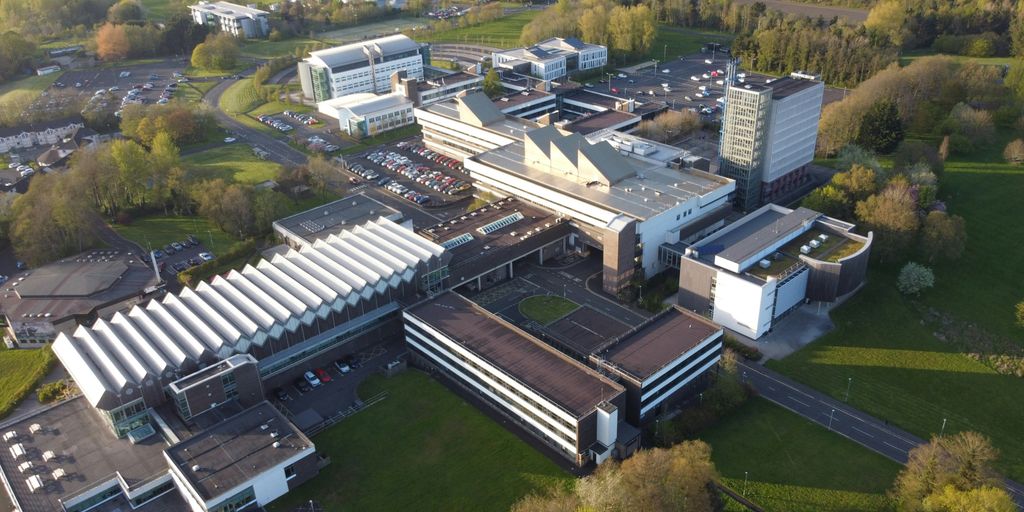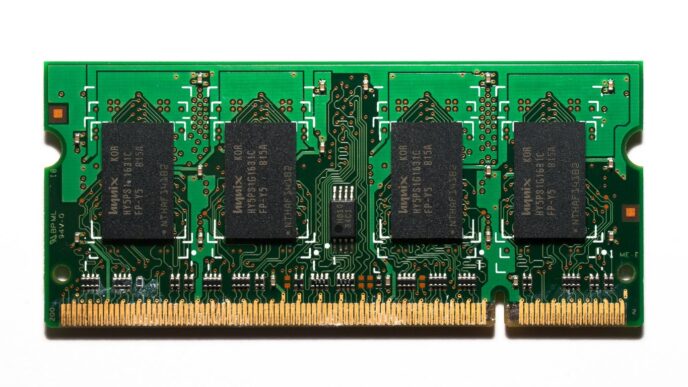The Netherlands might be a small country, but when it comes to making the tiny chips that power pretty much everything, they’re a huge deal. Seriously, this place is a global leader in the semiconductor world. From the machines that make the chips to the chips themselves, the Dutch have carved out a super important spot. It’s not just about business, either; it’s about staying ahead in technology and making sure the world keeps running on these essential components. The netherlands semiconductor industry is a big part of that.
Key Takeaways
- The Netherlands is a major player in the global semiconductor industry, making essential components for modern electronics like phones and medical devices.
- The Dutch semiconductor market is growing fast, with over €30 billion in annual sales and expected growth of more than 8% in the next few years.
- Big companies like ASML, NXP, and ASM are based in the Netherlands, showing the country’s strong position in making chip equipment and other semiconductor products.
- The semiconductor industry helps the Dutch economy a lot, creating jobs and making more money than the country’s overall economic growth.
- The Dutch government helps the semiconductor industry by giving money for research and development, which brings in more investment and helps the country stay a leader in technology.
Defining the Netherlands Semiconductor Industry
Core Components and Global Significance
The semiconductor industry in the Netherlands is a big deal. It covers everything from designing the chips to making them, putting them together, testing, and supplying all those essential bits and pieces that make modern electronics work. Think of it as the engine room for a lot of the tech we use every day. It’s not just phones and computers; it’s also medical equipment, cars, and how we communicate. The Dutch chip tech scene is super important in the global supply chain, pushing forward innovation in AI, IoT, and car tech. The Netherlands is one of only a few countries that can handle the whole semiconductor process, making it a major player worldwide. This is why semiconductor industry is so important.
Strategic Autonomy and Supply Chain Resilience
One of the biggest challenges is that the Netherlands relies a lot on other countries for supplies. To fix this, they’re working on a plan to be more independent. They’re thinking about moving production closer to home, maybe to other countries in the EU or ones that are friendly. The goal is to have everything needed for making semiconductors within a small area, about 220 km, so they can stay in control and not be so dependent on others. This way, they can protect the industry and stay a leader in the world. They’re also part of European plans, like the European Chips Act, to make the semiconductor industry stronger in Europe and get a bigger share of the market. This means working with other EU countries to make sure they’re not too reliant on countries outside the EU and can balance growing the economy with being in control of their own tech.
International Appeal for Deep-Tech Industries
Lots of international companies want to be in the Netherlands, especially those in deep-tech industries like semiconductors. Why? Because almost everyone speaks English, it’s easy to get around, and the quality of life is good. It’s a great place for people from all over the world to come and work. Plus, the Netherlands has a really good ecosystem for these kinds of companies, with lots of collaboration and innovation happening. It’s a place where companies can grow and thrive, thanks to the supportive environment and international connections.
Market Size and Growth Trajectory

Revenue Expansion and Global Market Share
The Dutch semiconductor market is a big deal in the EU, holding around 9% of the global market. We’re talking about an annual turnover north of €30 billion. The expectation is that it’ll jump about 8.61% from 2024 to 2029. This is all thanks to the rising demand for AI, 5G, and those super-fast chips needed for new tech. It’s a pretty exciting time for the industry, and the Netherlands is right in the thick of it. ASML demonstrates strong market presence.
Driving Factors for Sector Growth
So, what’s making this sector grow? Well, a few things. First, there’s a ton of cutting-edge R&D happening. Second, the industry and universities are working together really well. Third, there are strategic investments being made in research. And finally, the infrastructure is solid. All of this has helped the Netherlands become a leader in tech. Plus, the government is trying to reduce dependencies by exploring "friend-shoring" to bring production to the EU or allied countries. They’re even trying to create a complete semiconductor value chain within a small radius to keep control and make the supply chain more resilient. Here’s a quick look at some of the growth numbers:
- Revenue Growth: In 2021, the Dutch semiconductor industry saw a revenue increase of 31.1%, reaching €39.1 billion.
- Employment Growth: The industry saw a 10% global rise in full-time equivalents (FTEs), reaching 8,451.
- Earnings Growth: In the Netherlands, semiconductor earnings grew by 28.6% to around €22 billion, alongside a 12.4% increase in FTEs.
Impact on Related Industries
The microchip industry is growing fast in areas like automotive semiconductors, AI-driven chips, IoT, and photonic chips. According to a report, areas related to semiconductor manufacturing—equipment, equipment components, inspection, and metrology—contributed a huge chunk of the earnings and job growth in the Netherlands. The automotive electronics domain is also growing quickly because of electric vehicles and self-driving tech, which creates a demand for AI-driven semiconductor solutions. The IoT niche is getting bigger as more devices connect, and photonics is gaining traction for its potential to change data transfer and communications. The semiconductor value chain is complex, but it’s driving growth across many sectors.
Key Players and Market Dominance
The Netherlands has some serious players in the semiconductor game. It’s not just one company carrying the load; there’s a whole ecosystem of innovators and manufacturers that contribute to the country’s strong position. Let’s take a look at who’s who.
Leading Equipment Manufacturers
When you think of Dutch semiconductor companies, ASML Holding NV probably comes to mind first. They’re basically the only company in the world making EUV lithography machines, which are essential for creating the most advanced chips. That gives them a pretty big advantage. But it’s not just ASML. Companies like ASM International (ASMI) are also big in wafer processing equipment. These companies don’t just make stuff; they’re constantly pushing the boundaries of what’s possible in chip manufacturing.
Innovators in Automotive and IoT Semiconductors
It’s not all about the big equipment manufacturers. NXP Semiconductors is a major player, especially when it comes to automotive and IoT applications. They’re developing chips that power everything from advanced driver-assistance systems to smart home devices. Their chips are in a lot of cars, and they’re working on new technologies to make vehicles even smarter and safer. The automotive semiconductor market is huge, and NXP is right in the middle of it.
Collaborative Ecosystem for Diversification
One of the things that makes the Dutch semiconductor industry so strong is its collaborative nature. Companies work together, share knowledge, and support each other’s growth. This creates a diverse and resilient ecosystem that can adapt to changing market conditions. It’s not just about competition; it’s about cooperation. This collaborative spirit helps smaller companies and startups thrive, bringing new ideas and innovations to the table. The Netherlands has a knack for bringing different players together to create something bigger than themselves.
Productivity and Economic Contributions
The semiconductor industry is a big deal for the Dutch economy. It’s not just about making chips; it’s about creating jobs and pushing the boundaries of what’s possible. Over 50,000 people work in this sector across 300 companies, which helps the Netherlands stay competitive and boosts exports.
Job Creation and Technological Edge
The Dutch semiconductor industry is a major player in the high-tech world. In 2021, it generated €39.1 billion in global revenue, a 31.1% increase. That’s way more than the Netherlands’ overall GDP growth of 5% that year. To give you an idea, about 85% of chips made worldwide use Dutch tech. Companies like ASML and NXP, which are based in the Netherlands, are key to this global presence. The industry saw a 10% global rise in full-time jobs, reaching 8,451. In the Netherlands, semiconductor earnings grew by 28.6% to around €22 billion, alongside a 12.4% increase in jobs.
Revenue Growth Versus GDP Growth
Reports show that productivity in the sector has gone up, with revenue growing faster than the number of employees. This means companies are making more revenue per employee. The semiconductor industry’s growth is much higher than the country’s GDP growth rate. The microchip industry is expanding rapidly in several areas, such as automotive semiconductors, AI-driven chips, IoT, and photonic chips.
Efficiency Gains in Microchip Manufacturing
Improvements in microchip manufacturing and R&D have made the Netherlands a leader in innovation and efficient production. This also helps other industries like electronics manufacturing and software development grow. The semiconductor industry provides essential components that drive innovation in several sectors:
- Electronics Manufacturing: Semiconductors power electronic devices, and the Dutch industry ensures a steady supply of high-quality components.
- Software Development: Advanced chips enable complex software, including AI and machine learning, expanding software capabilities as chips advance.
- Automotive Industry: Companies like NXP provide critical semiconductor tech for automotive applications, including advanced driver assistance systems.
Segment-Specific Innovations

Dominance in Equipment and Metrology
Okay, so the Netherlands really shines when it comes to making the stuff that makes the chips. I mean, we’re talking about equipment, components, inspection tools, the whole shebang. A recent report showed that these areas accounted for a whopping 90% of the earnings growth and 89% of the job growth in the Dutch semiconductor industry. That’s huge! It’s not just about making chips; it’s about making the machines that make the chips. Think about it like this:
- ASML is the big dog here, basically owning the market for EUV lithography equipment.
- Other companies are killing it in inspection and metrology, making sure everything is perfect.
- This focus on equipment gives the Netherlands a unique position in the global supply chain.
Growth in Automotive and AI Chips
Beyond the equipment side, there’s a lot happening with chips themselves, especially for cars and AI. With electric vehicles and self-driving tech becoming more common, the demand for specialized chips is going through the roof. NXP Semiconductors is a major player here, making chips for automotive applications like advanced driver-assistance systems. And as AI gets integrated into everything, from smartphones to data centers, there’s a growing need for AI-driven semiconductor solutions. It’s a pretty exciting time to be in this part of the industry.
Emerging Fields in Photonics and Spintronics
Okay, this is where things get a little futuristic. Photonics (using light instead of electricity) and spintronics (using the spin of electrons) are emerging as potential game-changers in data transfer and computing. These fields are still relatively new, but they could revolutionize how we process and transmit information. The Netherlands is investing in research and development in these areas, hoping to be at the forefront of the next wave of semiconductor innovation. It’s like, electronics were cool, but what if we could do it with light? Or electron spin? Crazy, right?
Here’s a quick look at some of the potential benefits:
- Photonics could lead to faster and more energy-efficient data transfer.
- Spintronics could enable new types of memory and computing devices.
- These technologies could open up entirely new possibilities for AI and quantum computing.
Technological Advancements and Future Outlook
Pioneering Extreme Ultraviolet Lithography
The Netherlands has really made a name for itself thanks to its advancements in semiconductor tech. ASML’s EUV lithography is a game-changer, and it’s not just about making smaller chips. It’s about enabling all sorts of new technologies. ASML’s journey from a modest startup to a global powerhouse shows the importance of specialized innovation and long-term investment into R&D. Their grip on EUV lithography ensures its influence over the future of semiconductors doesn’t wane and propels them for years to come.
Innovations in AI and Quantum Computing
The future is looking bright with new developments in AI and quantum computing. The Netherlands is right in the middle of it all. The automotive electronics domain is rapidly growing with the rise of electric vehicles and autonomous technologies, creating demand for AI-driven semiconductor solutions. These fields need high-performance chips, and the Dutch are working hard to deliver. China has started developing its own technology, such as the BR104 graphics card and the Moore Threads MTT S80 GPU. While these products are not yet competitive on the global stage, their sheer processing power signals that China’s technological landscape is rapidly evolving.
Enhancing Energy Efficiency in Chip Production
Energy efficiency is a big deal, and the semiconductor industry is no exception. The Dutch are focused on making chip production more efficient and sustainable. This includes:
- Developing new materials that require less energy to process.
- Optimizing manufacturing processes to reduce waste.
- Designing chips that consume less power during operation.
These efforts not only help the environment but also make the industry more competitive. In the next few years, it wouldn’t be surprising if the machinery required to make ultra-fine chips becomes obsolete. China’s drive for technological independence is more ambitious than ever, with significant investments being poured into this mission.
Investment Climate and Government Support
Attracting Foreign Direct Investment
The Netherlands has a pretty solid investment climate for semiconductors. It’s not just about the money; it’s the whole package. We’re talking about a skilled workforce, top-notch digital infrastructure, and a real buzz around startups. The government is also throwing its weight behind the industry, which helps a lot. They’re putting money into financial incentives, grants, and subsidies, making the Netherlands an attractive spot for foreign companies and new businesses. It’s a good place to be if you’re in the chip game.
Government Initiatives and Financial Incentives
The government is really trying to help the semiconductor industry thrive. They’ve got a bunch of initiatives and financial incentives to make it happen. For example, there’s "Project Beethoven," a €2.5 billion plan to boost the business environment in Brainport Eindhoven. This includes investments in education, infrastructure, and housing. Plus, they’re actively involved in European-level strategies like the European Chips Act, which aims to strengthen the semiconductor ecosystem across Europe. It’s all about securing the Netherlands’ role in the global market and reducing reliance on suppliers outside the EU. It’s a balancing act, trying to grow the economy while maintaining strategic technological independence. The Dutch government’s supportive framework encourages collaboration among companies, research institutions, and universities.
Strategic Autonomy Through Research Funding
To stay competitive, the Netherlands is putting a lot of money into research. This isn’t just about keeping up; it’s about getting ahead. They’re funding projects that explore new materials, fabrication techniques, and chip designs. This helps companies like ASML, who are already pushing boundaries with extreme ultraviolet (EUV) lithography. However, there are challenges. Export restrictions, especially on advanced chip-making equipment to China, could affect Dutch firms. The Netherlands is trying to balance economic interests with national security by implementing strategic export controls.
Conclusion
So, what’s the big takeaway here? The Netherlands has really made a name for itself in the semiconductor world. It’s not just about a few big companies, though they’re super important. It’s also about how everyone works together—government, schools, and businesses. This teamwork helps them stay ahead, even with all the changes happening in technology and the world. They’re always looking for new ideas and ways to make things better, whether it’s for AI, 5G, or even quantum computing. This country is definitely a major player, and it looks like they’ll keep pushing the boundaries in chip tech for a long time to come.
Frequently Asked Questions
What makes the Netherlands a global leader in semiconductors?
The Netherlands is a big deal in the global semiconductor world. It’s one of only three countries that has a complete supply chain for making chips, from start to finish. This means they design, build, and test these tiny but powerful components that are in everything from your phone to your car. Their strong position helps shape how technology moves forward everywhere.
How big is the Dutch semiconductor market, and how fast is it growing?
The Dutch semiconductor market is quite large, bringing in over 30 billion euros each year. Experts think it will keep growing by about 8.6% every year from 2024 to 2029. This growth is happening because more and more people need chips for new technologies like artificial intelligence (AI), 5G internet, and powerful computing.
Who are the most important companies in the Dutch semiconductor industry?
Big names like ASML, NXP Semiconductors, and ASM International are key players. ASML is famous for its special machines that make the smallest, most advanced chips. NXP makes chips for cars and smart devices, and ASM International is known for its equipment used in chip making. These companies, along with many smaller ones, make the Netherlands a powerhouse.
How does the semiconductor industry help the Dutch economy?
The semiconductor industry is a huge help to the Dutch economy. It creates over 50,000 jobs and helps the country stay ahead in technology. The money it brings in has grown much faster than the country’s overall economy, showing how important it is. It also helps other industries, like those that make electronics, software, cars, and medical devices, by providing them with essential parts.
What are the main areas of innovation in Dutch semiconductors?
The Netherlands is really good at making the machines and tools used to build chips, which is where most of their money comes from. They are also growing fast in making chips for cars and AI, and they are exploring new areas like photonics and spintronics, which use light and electron spin to create even more advanced technologies.
What is the government doing to support the semiconductor industry?
The Dutch government is working hard to bring in more money from other countries and supports the industry with grants and financial help. They’ve put aside a lot of money for research to make sure the Netherlands can make its own chips and not rely too much on other countries. This support helps the industry grow and stay strong.














